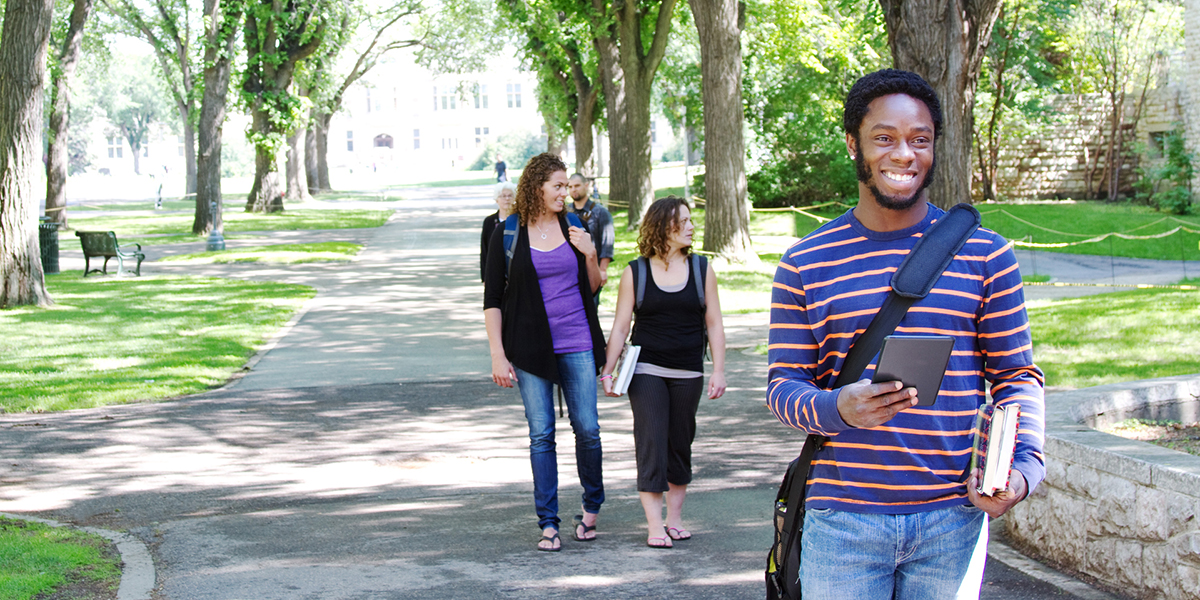The Next Frontier in Guided Pathways: Linking Developmental Education and Pathways Reforms
By Davis Jenkins, Hana Lahr, and John Fink

| This post is adapted from the CCRC report Implementing Guided Pathways: Early Insights From the AACC Pathways Colleges, released in April. |
As colleges embark on guided pathways reforms, a first step is to map out their programs so students have an easy-to-follow pathway to a degree. Judging from our work with the colleges in the AACC Pathways Project—in which 30 colleges are working with the American Association of Community Colleges to implement guided pathways across their institutions—many colleges start by developing maps for students deemed college-ready. But they quickly realize that the pathways will help only a fraction of the student body.
Most community college students are not well prepared for college. Nationwide, more than two thirds of community college students take at least one remedial course. So a critical next frontier for colleges working on guided pathways will be to connect their developmental education reforms to their pathways efforts so that more students who arrive underprepared can pass critical program gateway courses and get on a program path as efficiently as possible.
A key objective of pathways reforms is to help entering students explore career and college options and enter a program of interest (by taking and passing key program gateway courses), ideally in their first year. For that to happen, the conventional approaches to placement and remediation will not suffice. Students cannot have a first-term schedule consisting of three developmental courses and a college success course—nor can they take a two- or three-term developmental sequence before being permitted to take a college-level math or English course or gateway courses in their field of interest.
Virtually all of the AACC Pathways colleges, like many others across the country, are experimenting with new approaches to developmental education and assessment. Most report that they are getting very good results with students in pilots of these approaches. Yet few community colleges have implemented these reforms at scale. To do so, colleges will have to change their mindsets and practice about how they help their students succeed in college-level courses in the following ways.
From Separating College-Ready and Not-College-Ready Students to Assuming That Virtually All Entering Students Need to Develop Skills and Habits to Succeed in College
Community colleges have long used standardized tests to determine whether students are ready for college-level work and to place students deemed not college-ready into developmental courses.
Research by CCRC and others has led colleges to explore using additional measures, including high school grade point average, to determine whether students are ready for college-level courses. Yet many students deemed college-ready upon entry or who successfully complete developmental education still struggle in college-level courses. Moreover, it is becoming clear that even students who appear to be ready for college based on test scores and grades may have nonacademic issues, such as poor organizational skills, weak self-confidence or motivation, or the lack of a clear plan, that may stymie them in college.
Thus, rather than assume that some students are college-ready while others are not, colleges should assume that the vast majority of students need assistance acclimating to college. Instead of using assessments to sort students, colleges are beginning to use entry assessments as a tool for diagnosing what supports students need to succeed in college. Some of the AACC Pathways colleges are exploring the use of multiple measures, including high school grades, in placement decisions. Other AACC Pathways colleges are going further and incorporating noncognitive assessments into their orientation and intake processes.
From Prerequisite Remediation to Corequisite, Contextualized Academic Support
A growing body of evidence indicates that for many students, providing timely, contextualized academic support in concert with college-level coursework is more effective than trying to remediate deficiencies through prerequisite instruction that attempts to re-cover what students were supposed to have learned in high school. Almost every AACC Pathways college has been experimenting with approaches to accelerating academically underprepared students into college-level programs. Most report good results, especially with approaches that integrate academic support into college-level courses. Yet most colleges have not yet implemented these practices at scale.
From Focusing on Math and English Gateway Courses to Integrated Support in All Program Gateway Courses
CCRC research indicates that other college-level courses—such as Biology 101, Accounting 101, Anatomy and Physiology, Psychology 101, and American Civilization—pose barriers to degree completion as great as college-level math and English. Yet colleges focus almost all of their remedial instruction and much of their academic support on the three Rs.
Once colleges identify critical courses for each of their program areas (or “meta-majors”) as part of the pathways mapping process, the next step is to ensure that such courses have adequate academic support integrated into them. Colleges are doing this in a variety of ways, from adding supplemental instructional sessions to using peer tutors.
***
By making these shifts in mindset and practice, guided pathways colleges can ensure the reforms reach the broader community of students who walk in their doors, and they can change developmental education from a separate, distinct pre-college hurdle that blocks many students from entering college programs into an integrated program that helps all students reach their potential.
